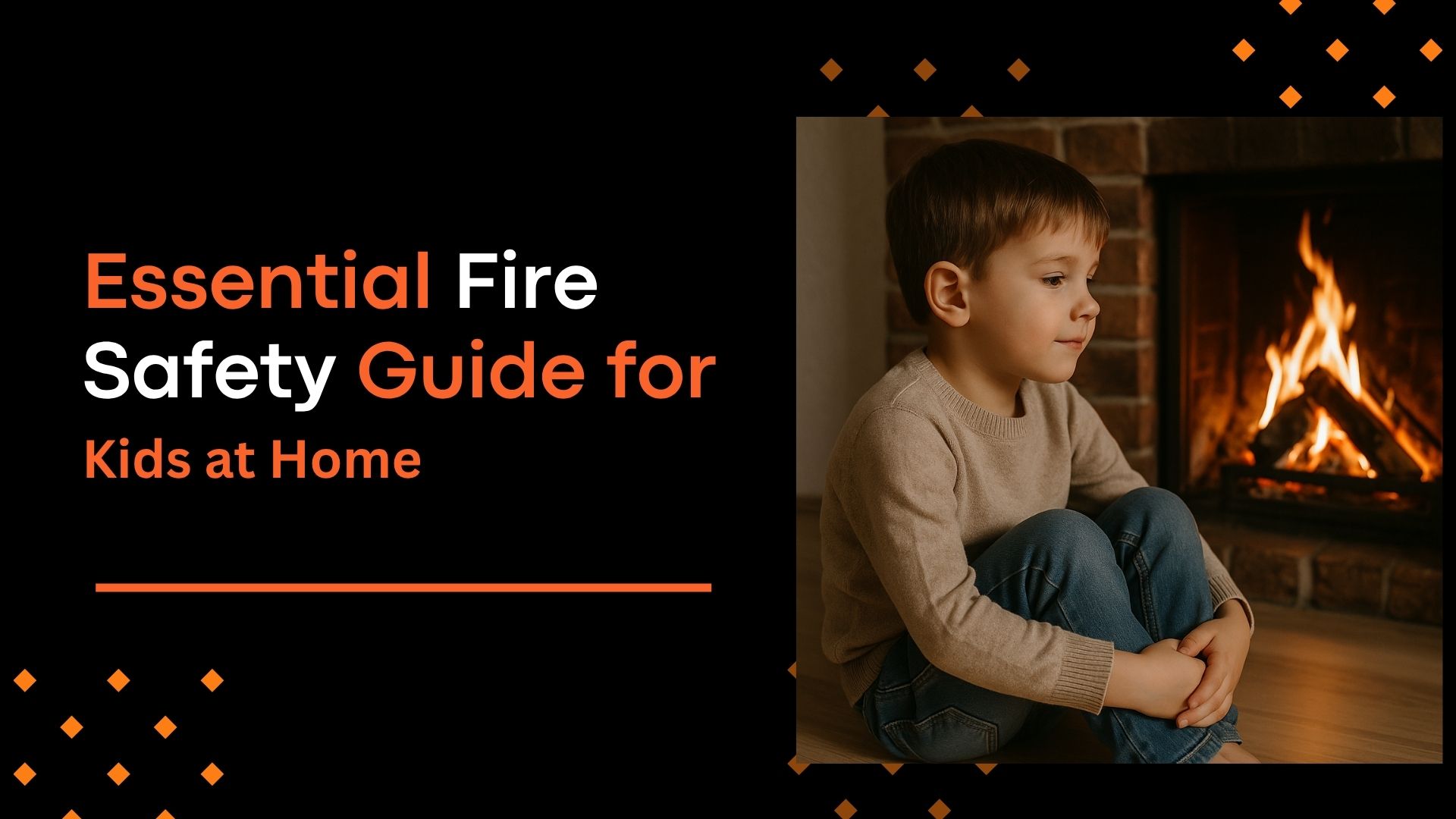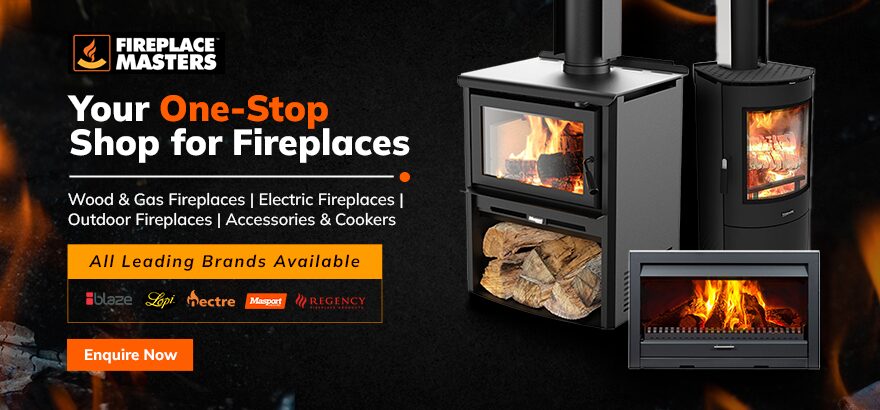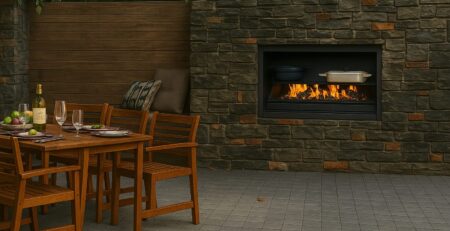
6
Aug
Essential Fire Safety Guide for Kids
Teaching fire safety to children helps them understand what to do in the event of a fire. This guide uses clear steps so every child can understand. Follow each section—equipment, planning, practice and safety rules—to make your home safer.
Common Causes of House Fires
Knowing how fires often begin helps your family stay alert. Talk through these points so everyone knows the risks:
- Cooking left unattended on the stove or in the oven.
- Electric heaters and a freestanding gas fireplace are too close to the curtains.
- Old or damaged wiring that can spark.
- Cigarettes were dropped on carpets or furniture.
- Candles left burning out of sight.
- Yard fires or barbecues without a safe boundary.
- Petrol, paint thinner or other flammable liquids stored in the home.
- Christmas lights are heated by worn-out wires.
Equipment and Planning
Smoke Alarms and Carbon Monoxide Detectors
Show children what the loud beep sounds like. Explain that batteries must be fresh so the alarm works when needed. Test alarms on the same day you change clocks for daylight saving. Please point out the test button and let each child press it.
Fire Escape Plan
Draw a simple map of your home with two exit routes from every room. Label doors, windows and the stairs. Choose a meeting spot in the front yard or driveway. Walk through the plan with your children:
- If this door is blocked by smoke or flames, open this window instead.
- Once you’re outside, go straight to our meeting spot.
Fireplace Flue Kit
Explain that a fireplace flue kit is the metal duct above the fireplace that carries the smoke up and out of the house. Show children where the flue handle is and tell them never to touch it when the fireplace is hot. Explain that an open flue allows smoke to escape, keeping the room clear.
Fire Extinguisher Training
Teach older children to use a fire extinguisher with these straightforward steps:
- Pull the pin: Grip the metal pin at the top and pull it out. It unlocks the extinguisher.
- Aim at the base: Point the nozzle low, at the bottom of the flames where the fuel is burning.
- Squeeze the handle: Press both handles together to release the powder or foam.
- Sweep side to side: Move the nozzle from left to right, covering the fire’s base until it goes out.
Store the extinguisher near an exit so you can grab it on your way out. Check the pressure gauge monthly—if the needle is in the green zone, the unit is ready for use.
Practice Fire Drills
Running regular drills helps children react without panic. Make drills part of family life:
- Pick a day: Set a date every three months.
- Sound the alarm: Press the test button on the smoke detector.
- Move to safety: Have everyone follow the escape plan to the meeting spot.
- Check timing: Use a stopwatch to see how fast you all got out.
- Review: Ask, “Was any exit blocked? Did anyone get confused?” Then, fix any problems and try again.
Children’s Actions in a Fire
When a real fire happens, clear rules save lives. Teach kids to:
- Get out, stay out: Never go back inside for toys or pets.
- Stay low in smoke: Crawl on your hands and knees to find cleaner air.
- Check doors: If a door handle is hot, do not open it. Use another way out.
- Call for help: Once you arrive at the meeting spot, call emergency services and provide them with your address.
Explain that firefighters wear protective gear, so children should not hide but should stay in plain view so rescuers can find them quickly.
Stop, Drop & Roll
If clothes catch fire, show children each stage step by step:
- Stop moving: Freeze where you are.
- Drop to the ground: Lie flat on your front.
- Cover your face: Use one hand to protect your eyes.
- Roll over and over: Keep rolling until the flames are out.
Practice this on soft grass or carpet so it becomes second nature.
Yard and Campfire Safety
Families often gather around an outdoor wood fireplace for warmth or cooking. Keep everyone safe by:
- Clearing a circle of bare earth or stones around the fire pit.
- Having a bucket of water and a shovel within reach.
- Telling children to stand at least two metres back from the fire.
- Showing them how wind can blow sparks onto dry grass.
- Teach them to pour water on the coals when you finish so they cannot reignite.
Electric Fireplace and Heater Use
Electric fires are easy to use, but they still require a safe setup. With a freestanding electric fireplace or any heater:
- Place it at least one metre from curtains and furniture.
- Plug it directly into the wall—never use an extension cord.
- Please turn it off and let it cool completely before moving or storing.
Two-Storey Home Safety
If stairs become blocked, show older children how to use a window ladder. Keep the ladder in each upstairs bedroom and practice hanging it over the window sill so they know precisely where it is.
Encouraging Family Involvement
Encouraging children to take an active role in fire safety helps them learn and makes them feel empowered and responsible. Ask them to remind you when batteries need replacing or heater cords need to be straightened.
Thank them when they offer to check alarms or tidy a safe zone around the fireplace. This involvement builds good habits and increases their confidence in handling fire safety measures.
Final Words
By using clear steps, regular drills and simple rules, your family can handle a fire calmly. Simple practice makes these actions automatic, reducing fear.
Reach Out to Fireplace Masters
Keep your home safe with expert help and high quality fireplaces. Contact Fireplace Masters today for a free fire safety check and advice. We supply wood, gas, and electric fireplaces from the choicest brands, including Blaze, Regency, Rinnai, Euro, Brunner, Nectre, and Masport, to name a few. We will also guide you through a safe setup so you and your family can enjoy peace of mind.

Related Blogs
21 Modern Fireplace Ideas That'll Help You Create the Ultimate Cozy Space
Fireplaces are more than a home feature; they’re a mood, a gathering point, a daily delight....






















